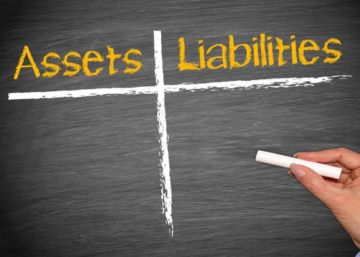Understanding the value of your business is crucial whether you’re planning to sell, seeking investment, or simply want to know where you stand. Business valuations can seem complex, but they boil down to a few key factors: risk drivers and value drivers. These elements can either boost your business’s worth or detract from it significantly.
Risk drivers are the factors that could potentially harm your business’s future performance. They include elements like market volatility, economic downturns, or even internal issues like reliance on a single customer or supplier. Identifying these risks is the first step in managing them effectively.
On the flip side, value drivers are positive factors that increase your business’s attractiveness and profitability. These might include a strong brand reputation, loyal customer base, or proprietary technology. Understanding how these drivers work can help you enhance your business value.
In this article, we’ll delve into the key risk and value drivers in business valuations. By grasping these concepts, you can make informed decisions to manage risks and leverage value, ultimately leading to a more accurate and favorable business valuation.
Understanding Key Risk Drivers in Business Valuations
Risk drivers are factors that could negatively impact your business’s value. Understanding these risks is essential to managing them and protecting your business.
- Market Volatility: Changes in the market can drastically affect your business. Economic downturns, new regulations, or shifts in consumer behaviour can reduce your business’s value. Keeping an eye on these external factors helps in anticipating and mitigating their impact.
- Dependence on Key Personnel: If your business relies heavily on a few key employees, it can be risky. Losing important staff members can disrupt operations and decrease value. Diversifying responsibilities across a broader team can help reduce this risk.
- Customer Concentration: If a large percentage of your revenue comes from a small number of customers, your business is at risk. Losing one of these customers could significantly impact your finances. Expanding your customer base can make your business more resilient.
- Operational Risks: These include anything from inefficient processes to outdated technology. Operational inefficiencies can increase costs and reduce profitability. Regularly updating systems and improving processes can make your business more efficient and valuable.
- Financial Health: Poor financial management, excessive debt, or inconsistent cash flow can harm your business value. Maintaining accurate financial records and managing debt effectively can help mitigate these risks.
Identifying and managing these risk drivers is crucial for maintaining and increasing the value of your business.
Identifying Value Drivers That Enhance Business Worth
Value drivers are factors that enhance your business’s worth. Recognising and leveraging these drivers can significantly boost your business valuation.
- Strong Brand Reputation: A well-known and respected brand attracts customers and builds loyalty. Investing in marketing and ensuring consistent quality can strengthen your brand’s reputation.
- Proprietary Technology: Owning unique technology or intellectual property sets your business apart from competitors. This exclusivity can drive higher valuations, as it indicates potential for sustained growth.
- Recurring Revenue: Subscription models or long-term contracts with customers ensure a steady income stream. Recurring revenue adds stability and predictability to your finances, making your business more attractive to investors.
- Efficient Operations: Streamlined and cost-effective operations increase profitability. Investing in automation, training, and process improvements can enhance your operational efficiency, driving up your business’s value.
- Diverse Customer Base: A wide and varied customer base reduces dependency on a few clients. Serving different segments and expanding your market reach can make your business more resilient and valuable.
- Scalable Model: A business model that can easily expand and grow without proportional increases in costs is highly valuable. Scalability indicates potential for future growth, attracting investors and increasing valuation.
Focusing on these value drivers can help you build a more robust and profitable business, enhancing its overall worth.
By understanding the key risk and value drivers, you can make informed decisions to protect and grow your business.
Assessing the Impact of Risk and Value Drivers on Valuations
Assessing the impact of risk and value drivers is crucial for accurate business valuations. Both elements play a significant role in determining the overall worth of your business.
- Risk Drivers: High-risk factors decrease your business’s valuation. An investor or buyer will see these risks as potential future losses. For instance, a business highly dependent on a single customer will appear riskier than one with a diversified client base. Similarly, reliance on outdated technology can be a red flag, indicating higher future costs for upgrading and maintenance.
- Value Drivers: Positive value drivers boost your business’s worth. Reputable brands, proprietary technologies, and a stable revenue stream are attractive to investors. These factors show that your business has strong growth potential and stable profitability.
- Quantifying Impact: Accountants use various methods to quantify the impact of these drivers. They analyse financial statements, market conditions, and operational efficiency. This detailed analysis gives an objective view of how risks and values affect your business.
- Balancing Act: Achieving a balanced approach by minimising risks and maximising value drivers leads to a favourable valuation. Regularly reviewing and adjusting strategies helps maintain this balance and enhances your business’s market appeal.
By understanding how these factors influence valuations, you can better position your business for growth and investment opportunities.
Expert Insights on Managing Risk and Value Drivers for Optimal Business Valuation
Expert guidance is essential for managing risk and value drivers effectively. Here are some strategies to optimise your business valuation:
- Conduct Regular Risk Assessments: Regularly review your business for potential risks. Identifying issues early allows you to take corrective action before they escalate. This proactive approach can safeguard your business’s value.
- Diversify Revenue Streams: Reducing reliance on a single customer or market stabilises your revenue. Exploring new markets or diversifying product offerings can mitigate risks associated with market changes.
- Invest in Technology: Keeping your technology updated improves operational efficiency and reduces future costs. Investing in automation and advanced tools can streamline processes and increase profitability.
- Strengthen Brand Reputation: Consistently deliver quality products and services to build a strong brand. Positive customer reviews and a good reputation in the market enhance your business’s value.
- Enhance Financial Management: Maintain accurate records and manage cash flow effectively. Good financial health is attractive to investors and can significantly boost your business’s valuation.
- Seek Expert Advice: Collaborate with financial advisors or accountants to navigate complex valuation processes. Their expertise ensures that you consider all relevant factors and make informed decisions.
Applying these strategies can help you manage risks and leverage value drivers, resulting in a more favourable business valuation.
Conclusion
Managing risk and value drivers is crucial for understanding and enhancing your business valuation. Key risk drivers such as market volatility, reliance on key personnel, and customer concentration can significantly impact your business’s worth. Addressing these risks proactively helps maintain stability and protect your business’s value.
On the other hand, value drivers such as a strong brand reputation, proprietary technology, and a scalable business model can enhance your business’s attractiveness and profitability. Leveraging these positive factors boosts your business valuation and sets the stage for long-term success.
Balancing these elements through regular assessments, strategic investments, and financial management can lead to optimal business valuation. By focusing on both mitigating risks and enhancing value drivers, you position your business for sustainable growth and increased market appeal. At Marsh & Partners, we specialise in helping businesses manage risk and value drivers to achieve accurate and favourable valuations. Contact Marsh & Partners today to learn how we can assist in optimising your business valuation.






